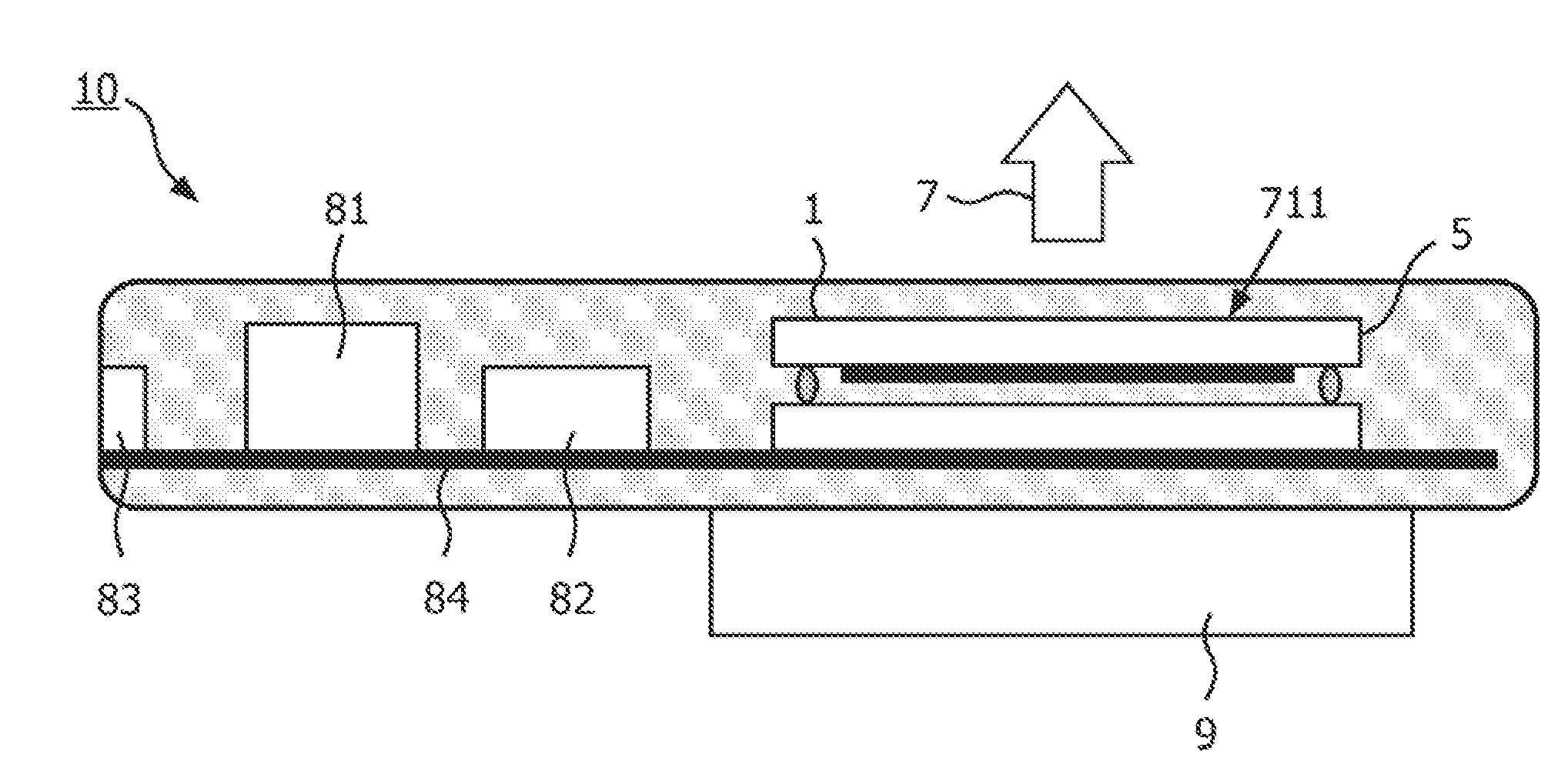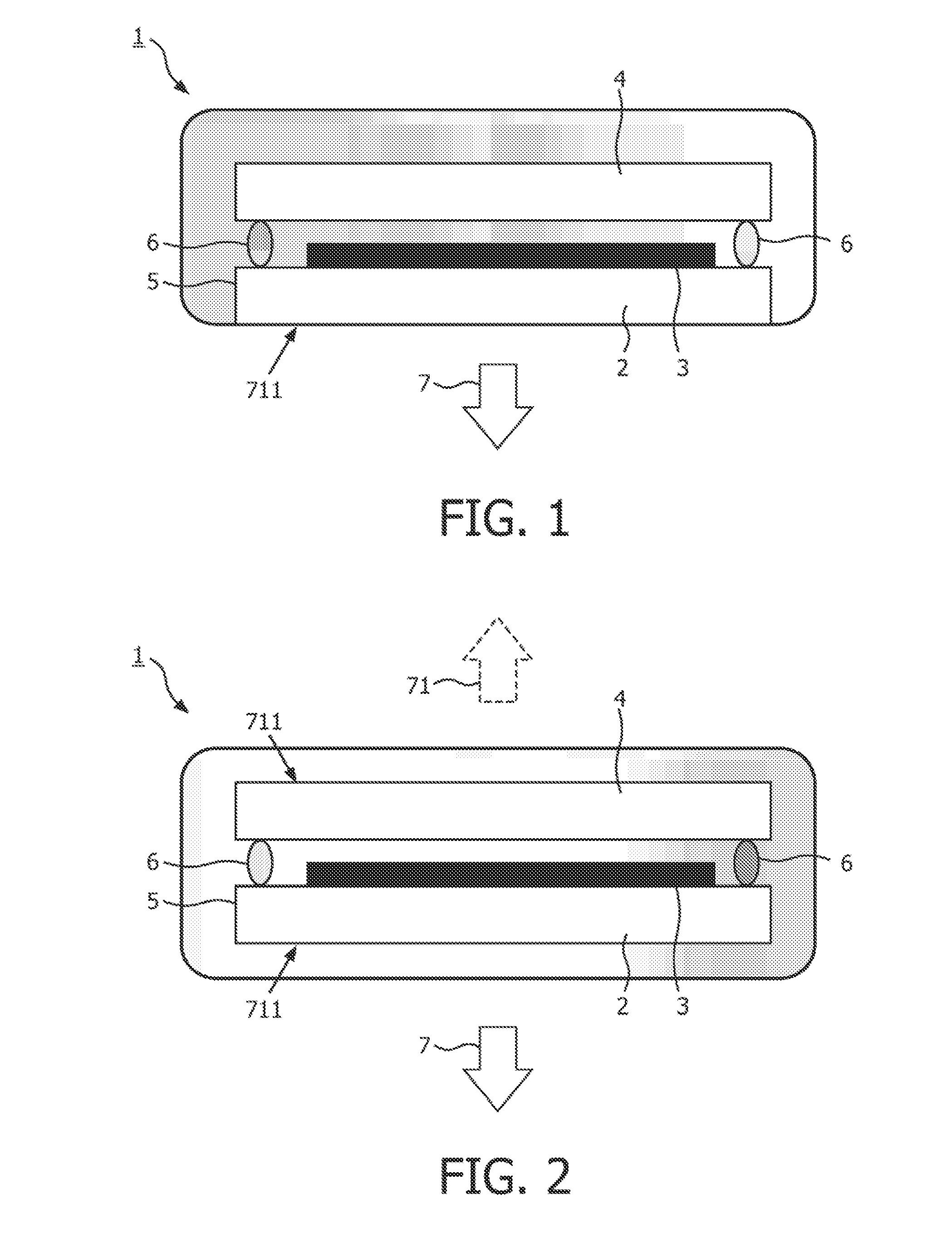OLED devices with protection cover
a technology of protection cover and oled device, which is applied in the direction of discharge tube/lamp details, discharge tube luminescnet screens, incadescent envelopes/vessels, etc., can solve the problems of reducing the mechanical loading capacity of the oled device, and affecting the operation of the device. , to achieve the effect of reducing the risk of injuries and improving the mechanical loading capacity
- Summary
- Abstract
- Description
- Claims
- Application Information
AI Technical Summary
Benefits of technology
Problems solved by technology
Method used
Image
Examples
Embodiment Construction
[0026]FIG. 1 shows an example of an OLED device 1 according to the present invention comprising a light emitting layer stack 3 arranged on top of a flat glass substrate 2. The light emitting layer stack 3 is encapsulated against the environmental atmosphere with a flat encapsulating glass cover 4, which is sealed to the substrate 2 with gastight glass frit 6. Substrate 2 and encapsulating cover 4 may have different shapes in other embodiments, also the material of the substrate and the encapsulating cover might be different. However, substrate 2 and encapsulating cover 4 have sharp edges causing a risk of injuries during handling and a risk of damages due to the fragile glass used from substrate and encapsulating cover. OLED devices are scalable and especially large area OLED light sources are desired to illuminate rooms etc. For large area OLED devices, the risk of damages will increase with increasing size of OLED device. The example shown in FIG. 1 is a so-called bottom emitter e...
PUM
 Login to View More
Login to View More Abstract
Description
Claims
Application Information
 Login to View More
Login to View More - R&D
- Intellectual Property
- Life Sciences
- Materials
- Tech Scout
- Unparalleled Data Quality
- Higher Quality Content
- 60% Fewer Hallucinations
Browse by: Latest US Patents, China's latest patents, Technical Efficacy Thesaurus, Application Domain, Technology Topic, Popular Technical Reports.
© 2025 PatSnap. All rights reserved.Legal|Privacy policy|Modern Slavery Act Transparency Statement|Sitemap|About US| Contact US: help@patsnap.com



